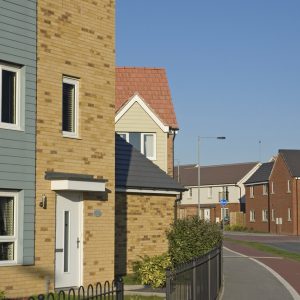
Prospects for new-build buyers appear to be improving, with both Halifax and Virgin Money announcing partnerships with Own New, aimed at helping purchasers with only a five per cent deposit.
They follow the likes of Gen H, Perenna and Furness Building Society in teaming up with Own New.
Brokers told Mortgage Solutions that further options to support new-build buyers were welcome, given the conclusion of the Help to Buy scheme, with many suggesting that interest in newly built homes is actually increasing currently.
Alternative options welcome
Matthew Williams, consultant at London Money, welcomed the “alternative approach” offered by Own New, though it remained to be seen how many lenders would sign up and how it would be implemented with developers, lenders and brokers.
Williams suggested the appetite for new build has picked up this year. He noted that buyers had been “sitting on the fence, waiting to see what was happening with rates and prices” and now felt the situation was more inviting.
He noted that affordability remains an area ripe for innovation, adding: “Affordable houses is the more direct approach, and one that would carry more weight, however, that’s always been in the budget and has always undelivered.”
Appetite growing for new builds
Mark Robinson, managing director of Albion Forest Mortgages, said his firm had seen an increase in enquiries from clients interested in purchasing new build properties recently.
However, he warned that the properties tend to be overvalued, with “a significant number of down valuations” taking place.
Akhil Mair, director of Our Mortgage Broker, was another intermediary to report “growing interest” in new builds at the moment, noting this was helped by greater availability of suitable mortgage deals.
“Lenders offering incentives like contributions towards deposits and stamp duty stand out,” he continued.
Supporting buyers
Justin Moy, managing director of EHF Mortgages, praised lenders for their approach to supporting borrowers with modest deposits, noting that the likes of Barclays and Santander were offering deals for those with only small sums saved.
He continued: “This improved support will inevitably make it more attractive to buy new, but buyers need to be aware that new build prices are normally higher and you may have some negative equity in the early years of ownership.”
The idea of buying a property that nobody else has lived in, and has little need of immediate renovation, is always appealing to buyers, particularly first-timers, argued Robert Timm, managing director of Sunland Mortgages.
He continued: “I think lenders have recently been improving criteria to assist new-build buyers, including reducing loan to values (LTVs) on new-build flats, making them more accessible.”
Williams said that buyers enjoy plenty of mortgage choice at the moment, with a handful happy to lend up to 95 per cent on new-build houses, though the majority limit themselves at 85 per cent.
He added: “It’s always worth checking with the developer about overexposure limits – I’ve known Santander in the past to be exposed on several sites. Personally, I find Halifax always source well on new-build products and are great for foreign nationals. Few lenders have these great criteria.”
Mair suggested there was plenty of room for innovation, for example, in the provision of flexible criteria for self-employed borrowers and those with adverse credit.
He added: “As for further innovation, providing upfront low-cost solutions with options for interest-only payments and developer contributions could greatly benefit new-build clients.”
Is it worth the premium?
Michelle Lawson, director of Lawson Financial, argued that buyers are increasingly becoming wise to the fact that they will have to pay a premium for new-build properties.
She continued: “Most buyers have issues post completion with the properties that need addressing. Sites tend to chase the massive profits by building executive homes rather than providing a good mix of all including a generous proportion, rather than a token gesture, of flats and smaller houses for starter homes.
“In my opinion, the developers need to change tack and review what the market or area wants rather than the shareholders.”
Goodbye Help to Buy
Demand for new builds has been “pretty consistent”, suggested Stephen Perkins, managing director of Yellow Brick Mortgages.
However, he noted that with Help to Buy now a thing of the past, “whilst demand is strong, the ability for potential buyers to afford and obtain the new-build properties has reduced.”
Timm pointed out that a big drawback for the new-build sector has been the removal of the Help to Buy scheme, with nothing established to replace it.
“That was a hugely important scheme that helped thousands onto the ladder into a new-build home, and nothing since has come close to having as much of a positive impact for buyers.”
Look again at shared ownership
Gary Bush, financial adviser at MortgageShop.com, called on the government to focus on existing schemes aimed at supporting buyers, rather than coming up with new initiatives for the new-build market.
He said “The government would be better-placed at taking another look at their existing shared ownership arrangements and removing a lot of housing association draconian conditions rather than further new-build meddling.”















